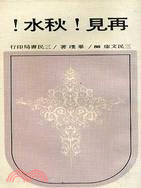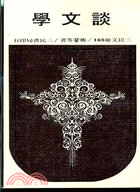Quality Assurance In Analytical Chemistry - Applications In Environmental, Food And Materials Analysis, Biotechnology And Medical Engineering 2E
商品資訊
ISBN13:9783527311149
出版社:John Wiley & Sons Inc
作者:Funk
出版日:2006/10/31
裝訂/頁數:精裝/300頁
定價
:NT$ 8998 元優惠價
:90 折 8098 元
若需訂購本書,請電洽客服 02-25006600[分機130、131]。
商品簡介
作者簡介
名人/編輯推薦
目次
相關商品
商品簡介
This best-selling title both in German and English is now enhanced by a new chapter on the important topical subject of measurement uncertainty, plus a CD-ROM with interactive examples in the form of Excel-spreadsheets. These allow readers to gain an even better comprehension of the statistical procedures for quality assurance while also incorporating their own data.
Following an introduction, the text goes on to elucidate the 4-phase model of analytical quality assurance: establishing a new analytical process, preparative quality assurance, routine quality assurance and external analytical quality assurance.
Besides updating the relevant references, the authors took great care to incorporate the latest international standards in the field.
Note: CD-ROM/DVD and other supplementary materials are not included as part of eBook file.
Following an introduction, the text goes on to elucidate the 4-phase model of analytical quality assurance: establishing a new analytical process, preparative quality assurance, routine quality assurance and external analytical quality assurance.
Besides updating the relevant references, the authors took great care to incorporate the latest international standards in the field.
Note: CD-ROM/DVD and other supplementary materials are not included as part of eBook file.
作者簡介
The late Werner Funk was professor at the University of Applied Science in Gießn-Friedberg (Germany).
Vera Dammann is a senior scientist at the University of Applied Science in Gießn-Friedberg (Germany) since 1978. She has been working in areas such as computing, electrical engineering, electrical and biophysical measurement technology, and clinical engineering. She is project manager for the international study course 'clinical engineering' and a member of the board of the German association for biomedical instrumentation.
Gerhild Donnevert is laboratory engineer in the laboratory for analytical chemistry at the University of Applied Science in Gießn-Friedberg (Germany). She is an active member of the German standardization committees for the examination of water, wastewater and sludge as well as of the Technical Committee 147 'Water Quality' of the International Standards Organization ISO.
Vera Dammann is a senior scientist at the University of Applied Science in Gießn-Friedberg (Germany) since 1978. She has been working in areas such as computing, electrical engineering, electrical and biophysical measurement technology, and clinical engineering. She is project manager for the international study course 'clinical engineering' and a member of the board of the German association for biomedical instrumentation.
Gerhild Donnevert is laboratory engineer in the laboratory for analytical chemistry at the University of Applied Science in Gießn-Friedberg (Germany). She is an active member of the German standardization committees for the examination of water, wastewater and sludge as well as of the Technical Committee 147 'Water Quality' of the International Standards Organization ISO.
名人/編輯推薦
"This is a comprehensive and authoritative book, remarkably well written, and incorporating the latest international standards in the field." (International Journal of Environmental and Analytical Chemistry, March 2008)
目次
Preface.
List of Symbols.
0 Introduction.
0.1 General Differentiation of Analytical Processes.
0.2 Quality of Analytical Processes and Results.
0.3 The System of Analytical Quality Assurance.
0.4 The Four-Phase Model of Analytical Quality Assurance.
1 Phase I: Establishing a New Analytical Procedure.
1.1 Introduction.
1.2 Calibration of the Fundamental Analytical Procedure.
1.3 Analyses at Very Low Concentrations.
1.4 Validation of Individual Process Steps and Examination of Matrix Influences.
1.5 Additional Statistical Methods.
1.6 Use of Internal Standards.
1.7 Preparing for Routine Analysis.
1.8 Summary of the Results of Phase I (Process Development): Documentation.
2 Phase II: An Analytical Process Becomes Routine; Preparative Quality Assurance.
2.1 Introduction.
2.2 Selection of the Analytical Procedure.
2.3 The “Training” Phase of the Process.
2.4 Establishment of Quality Objectives to be Adhered to in Routine Usage.
2.5 Control Samples for Internal Quality Assurance.
2.6 The Control Chart System.
3 Phase III: Routine Quality Assurance.
3.1 Introduction.
3.2 Fundamental Measures of Internal Quality Assurance.
3.3 Routine Quality Control.
3.4 Special Quality Problems in Routine Analysis.
3.5 Corrective Measures.
3.6 Documentation and Archiving.
4 Phase IV: External Analytical Quality Assurance.
4.1 Introduction.
4.2 Audits.
4.3 Interlaboratory (or Round Robin) Tests.
4.4 Effects of Internal Quality Assurance on the Results of Interlaboratory Tests.
4.5 Conclusion.
5 Definitions.
5.1 Quality and Quality Management.
5.2 Analytical Terms.
5.3 Analytical Results.
5.4 Deviation, Uncertainty.
5.5 Materials, Samples.
5.6 Statistical Tests.
6 References.
Appendix 1.
A1 Sample Calculations.
A1.1 Fundamental Calibration.
A1.2 Linearity Tests.
A1.3 Phases II and III: Control Charts.
Appendix 2.
A2 Statistical Tables.
Appendix 3.
A3 Contents of the CD.
Subject Index.
List of Symbols.
0 Introduction.
0.1 General Differentiation of Analytical Processes.
0.2 Quality of Analytical Processes and Results.
0.3 The System of Analytical Quality Assurance.
0.4 The Four-Phase Model of Analytical Quality Assurance.
1 Phase I: Establishing a New Analytical Procedure.
1.1 Introduction.
1.2 Calibration of the Fundamental Analytical Procedure.
1.3 Analyses at Very Low Concentrations.
1.4 Validation of Individual Process Steps and Examination of Matrix Influences.
1.5 Additional Statistical Methods.
1.6 Use of Internal Standards.
1.7 Preparing for Routine Analysis.
1.8 Summary of the Results of Phase I (Process Development): Documentation.
2 Phase II: An Analytical Process Becomes Routine; Preparative Quality Assurance.
2.1 Introduction.
2.2 Selection of the Analytical Procedure.
2.3 The “Training” Phase of the Process.
2.4 Establishment of Quality Objectives to be Adhered to in Routine Usage.
2.5 Control Samples for Internal Quality Assurance.
2.6 The Control Chart System.
3 Phase III: Routine Quality Assurance.
3.1 Introduction.
3.2 Fundamental Measures of Internal Quality Assurance.
3.3 Routine Quality Control.
3.4 Special Quality Problems in Routine Analysis.
3.5 Corrective Measures.
3.6 Documentation and Archiving.
4 Phase IV: External Analytical Quality Assurance.
4.1 Introduction.
4.2 Audits.
4.3 Interlaboratory (or Round Robin) Tests.
4.4 Effects of Internal Quality Assurance on the Results of Interlaboratory Tests.
4.5 Conclusion.
5 Definitions.
5.1 Quality and Quality Management.
5.2 Analytical Terms.
5.3 Analytical Results.
5.4 Deviation, Uncertainty.
5.5 Materials, Samples.
5.6 Statistical Tests.
6 References.
Appendix 1.
A1 Sample Calculations.
A1.1 Fundamental Calibration.
A1.2 Linearity Tests.
A1.3 Phases II and III: Control Charts.
Appendix 2.
A2 Statistical Tables.
Appendix 3.
A3 Contents of the CD.
Subject Index.
主題書展
更多
主題書展
更多書展今日66折
您曾經瀏覽過的商品
購物須知
外文書商品之書封,為出版社提供之樣本。實際出貨商品,以出版社所提供之現有版本為主。部份書籍,因出版社供應狀況特殊,匯率將依實際狀況做調整。
無庫存之商品,在您完成訂單程序之後,將以空運的方式為你下單調貨。為了縮短等待的時間,建議您將外文書與其他商品分開下單,以獲得最快的取貨速度,平均調貨時間為1~2個月。
為了保護您的權益,「三民網路書店」提供會員七日商品鑑賞期(收到商品為起始日)。
若要辦理退貨,請在商品鑑賞期內寄回,且商品必須是全新狀態與完整包裝(商品、附件、發票、隨貨贈品等)否則恕不接受退貨。
























